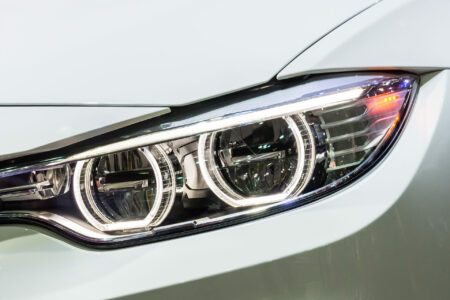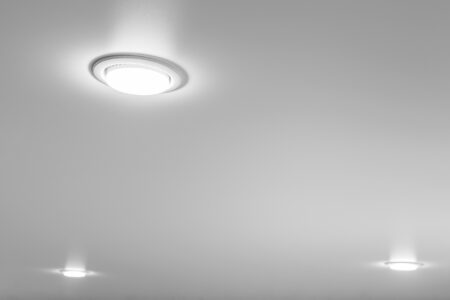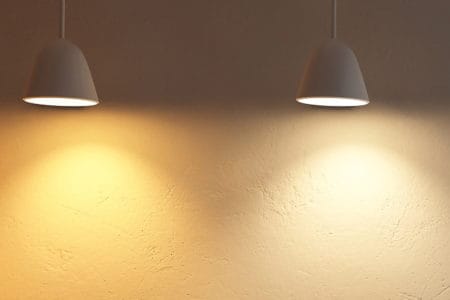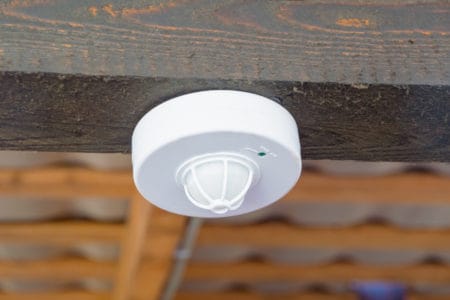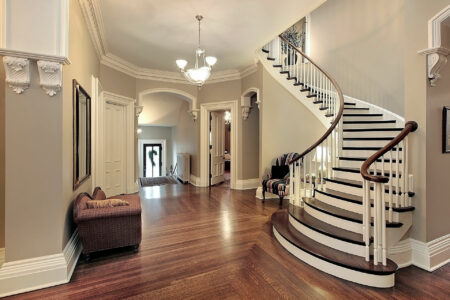If you are buying LED light bulbs, don’t assume that you can interchange E27 and E26 bulbs. Make sure to use an E26 socket for your E26 bulb at 120 V AC, or an E27 socket for an E27 bulb at 240 V AC. In some cases, however, it is possible to place an E27 bulb into an E26 socket, but the revere is not true. You should not use an E26 bulb in an E27 socket.
What are E26 and E27 bulbs and sockets?
The first light bulbs and their bases were developed by Thomas Edison. This is why the base of screws in bulbs is called Edison Screws or ES base. These bases are still used in bulbs today.
The E26 is the standard thread size group for bulbs in North America. In Europe it is E27. The number following the letter E is the diameter of the external thread screw in mm. So, for an E26 bulb, the diameter of the base is 26 mm, while the E27 has a base diameter of 27 mm.
The European variant, the E27, is rated at 240 volts. The E26 is rated at 120 volts. It is easy to put an E26 bulb into an E27 socket. The same is true for an E27 bulb in an E26 socket. There will be no problem with this. However, though the bulbs can fit both types of sockets, the voltage rating is different from each other.
Because of the essential incompatibility in the voltage, the incandescent E26 bulb could not be used in an E27 socket with 240 V AC. Similarly for E27 bulbs in E26 sockets.
What are the specifications of these bulbs?
The IEC has set accepted standards for the manufacture of E26 and E27 bulb bases. In these standards, both bulbs have specifications in diameter which is almost the same at a minimum of 26.05 mm and a maximum of 26.45 mm.
The difference between the two lies at the shortest distances between the bottom or live contact and the screw heads. The reason for this is that both bulbs have different levels of line voltage which are 120 volts and 240 volts, respectively.
Mechanically, these two types of bulb bases are interchangeable. This means that physically, you can fit an E26 bulb into an E27 socket, and vice versa.
Even if the difference between the screw dimensions is just 1 mm, they have virtually the same screw dimension requirement.
What makes them significantly different can be seen in the overall screw length, the diameter of the screw thread at the trough, and the height of the insulator cap.
An E26 bulb has a minimum screw length of 19.56 mm while an E27 has a screw length of 22.0 mm.
At the thread peak, the screw diameter of E26 is from 26..01 to 26.41 mm, and for E27, it is 26.05 mm to 26.45 mm.
At maximum thread trough, the screw diameter of E26 is 24.72 mm while the E27’s screw diameter is 24.76 mm.
The distance between threads of an E26 bulb is 3.629 mm. This is the same for the distance between threads of an E27 bulb.
The width of the live contact pad of an E26 bulb is from 9.14 mm to 11.56 mm, while that of the E27 bulb is from 4.8 mm to 11.5 mm.
The height of the insulator for an E26 bulb is 3.25 mm while for an E27 bulb, the height is 5 mm.
What are the differences in electrical safety between these two bulbs?
The mechanical difference between the two bulbs seem insignificant. However, the difference exists because of each bulb’s designed voltage level. As we have already mentioned earlier, the E26 lamps are made for markets in North American which uses 120 volts AC. The E27’s design is used for other markets. The norm is 240 volts AC.
There are additional precautions taken for E27 bulbs since they are designed to be used with circuits of higher voltage. This is why there is enough allowance between the live and the neutral contacts.
The length of the screws used in E27 lamps are longer. With a longer screw length, there will be more precision in the alignment of the screws in the socket. An improperly aligned screw decreases the space between the neutral screw threads and the live contact. This can increase the risk of a short circuit or an electric arc.
The thread trough diameter of E27 lamps is wider. This can help give a tighter and more secure contact. This can help protect against the entrance of moisture and debris in the socket. Moisture and contamination elevate the risk of short circuit and electrical fires at high voltage levels.
The height of the E27 lamp insulators is taller so that the space between the neutral screw base and the live contact is increased. This difference can help prevent the risk of short circuit.
From the standpoint of electrical safety, E26 and E27 lamps may be similar mechanically and interchangeable. But if you use an E26 lamp in an E27 socket at 240 volts, there is a greater risk of electrical fires and short circuits.
Can I use an E27 bulb in an E26 socket?
When you buy E26 or E27 light bulbs and sockets, most sellers will tell you that you can interchange them. You will be told that it is safe to fit an E26 bulb into an E27 socket, and the same is true the other way around. The reason, they say, is that the difference is just 1 mm, so it is close enough and can fit. However, this advice is based on incomplete information.
While both bulbs are mechanically interchangeable, meaning you can easily fit an E26 bulb into and E27 socket and vice versa, it does not follow that the electrical safety standards that the bulbs and sockets were designed for are met. The truth is, if the installation is not a match, there can be a greater risk for electrical fires and short circuits.
Conclusion
In general, an E27 bulb can be used safely in the E26 socket. However, using an E26 bulb in an E27 socket can be dangerous. The reason for this is the E26 bulbs can only receive up to 120 volts and not 240 volts. There should be a greater distance between the neutral and live contact with higher voltages. This is why there is a strict requirement for E27 bulbs when it comes to separation distance.
So, if you have a 240-volt incandescent vintage bulb, you can use it with an E26 socket where the voltage is just 120. The issue here is that your bulb will only operate at half the power. You will have a dimmer light. But if you use a 120-volt bulb in 240 volts, the light bulb will immediately burn out.

